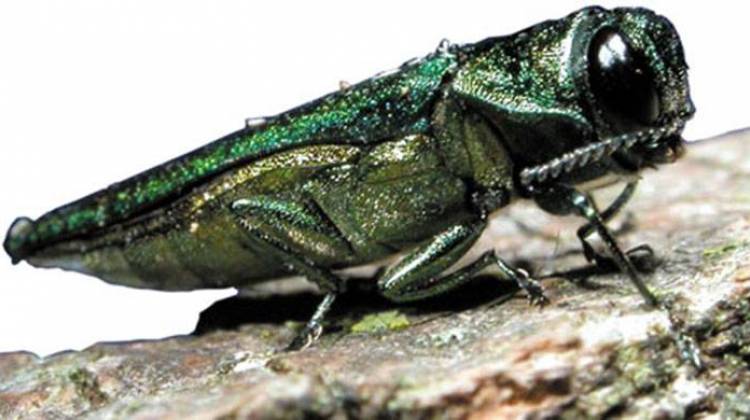Our brutally cold winter will not likely deter a highly destructive beetle. Emerald ash borer larvae can easily survive at 25 below, way colder than Indy’s lowest of minus 15 in early January. That’s why experts say the beetle will be back to feast on the state’s ash trees this spring and summer.
Adam Witte, exotic forest pest educator at Purdue University, says borers are protected by the tree and also produce a substance, like natural antifreeze, that prevents cells from crystallizing.
"It's kind of like a super cooling strategy and EAB is pretty effective at it because they evolved in an environment similar to ours." says Witte.
The invasive insect came from East Asia and since 2002 has been detected in 69 of Indiana’s 92 counties. Ash trees are common across the state and some types are more vulnerable.
"There are three species common in Indiana, green ash, white ash and blue ash." explains Witte, "The green ash seem to go quicker, followed by the white ash and the blue ash."
Witte says homeowners should treat trees in early spring with a special insecticide. He also says consulting an arborist is a good idea and can help with identification. More information on these topics can also be found at eabindiana.info.
Hoosiers should never transport firewood, giving the beetles a free ride to their next meal.
 DONATE
DONATE







 Support WFYI. We can't do it without you.
Support WFYI. We can't do it without you.